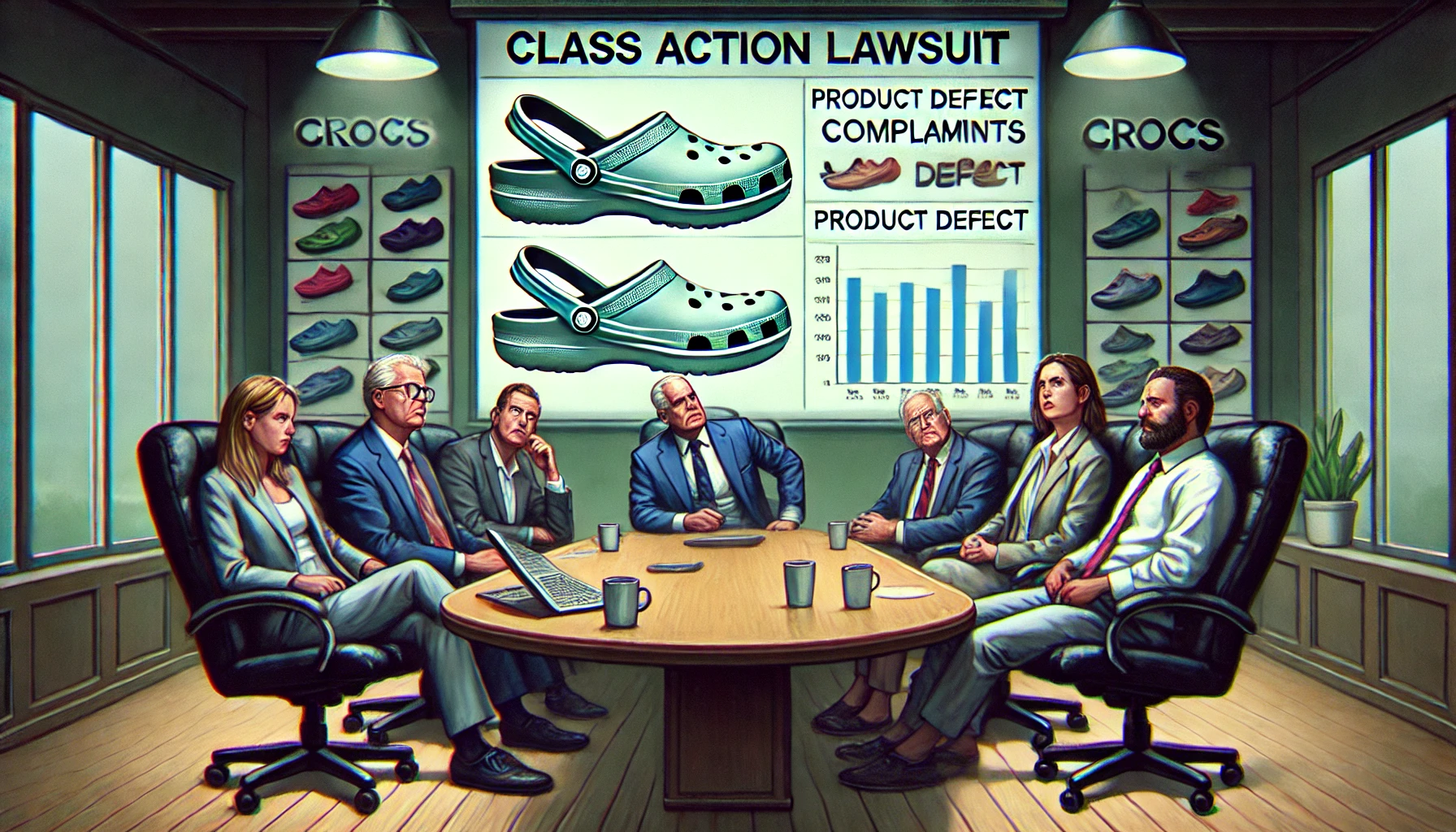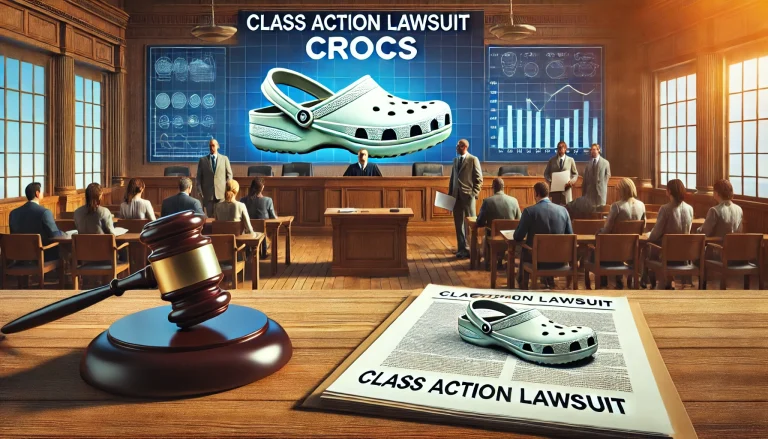A class action lawsuit Crocs is currently involved in highlights a legal process where a group of individuals with similar complaints collectively sue a company. In this case, Crocs, Inc. faces allegations that their shoes shrink when exposed to heat, sunlight, and water. Consumers claim that the company failed to warn them about this defect, despite advertising Crocs as durable and suitable for outdoor and water-based activities.
Origins of the Lawsuit
The Class Action Lawsuit Crocs began after numerous customers reported problems with their shoes shrinking and becoming unwearable. Many of these customers had purchased Crocs believing the company’s advertisements that claimed their shoes were perfect for outdoor adventures, water activities, and prolonged use.
However, the reality was far from the promises. Complaints showed that Crocs shrank significantly when exposed to direct sunlight, high temperatures, or water—conditions they were supposedly designed to withstand. Plaintiffs argue that the company knew about these issues but failed to inform customers, leading to widespread dissatisfaction.
Key Allegations Against Crocs
The lawsuit centers on several serious claims, including:
Defective Product Design
- Crocs reportedly shrink when exposed to heat, water, or sunlight, rendering them unusable.
- This issue raises concerns about the quality of materials used in the shoes.
Misleading Advertising
- Crocs are marketed as ideal for outdoor and water-based activities, which directly contradicts their performance in these conditions.
Consumer Harm
- Consumers claim they spent money on shoes that did not fulfill their intended purpose.
- Some individuals also experienced discomfort or accidents due to the deformation of the shoes.
These allegations form the foundation of the lawsuit, with plaintiffs seeking compensation and accountability from the company.
Timeline of Legal Proceedings
The lawsuit has seen significant developments in 2024:
- Initial Filing: The class action lawsuit was filed in California, representing consumers who purchased Crocs after November 2018.
- April 2024: A California federal court denied Crocs’ motion to dismiss the lawsuit. This decision allowed the case to proceed, opening the door for more affected consumers to join the lawsuit.
- Current Status: As of December 2024, the lawsuit remains unresolved, with legal proceedings ongoing and no settlement or final judgment yet.
Who is Affected?
The class action lawsuit currently covers:
- Consumers who purchased Crocs in California after November 2018.
- Individuals who experienced shrinking, warping, or other defects in their shoes.
To join the lawsuit, eligible participants need to provide:
- Proof of purchase (receipts, order confirmations, etc.).
- Evidence of the defect, such as photos or descriptions of the shrunken shoes.
How to Join the Lawsuit
Joining the class action lawsuit is straightforward and often free. Here are the steps to participate:
Contact the Legal Team
- Reach out to the law firm managing the lawsuit. They typically offer free consultations to determine eligibility.
Submit Proof of Purchase
- Provide receipts, invoices, or other documentation showing when and where you bought the Crocs.
Document the Defects
- Share photos, videos, or descriptions of the damage caused by the shrinking or deformation.
Participation in class action lawsuits usually does not require upfront legal fees, as costs are typically covered through settlements or court awards.
Crocs’ Defense
Crocs has denied the allegations and attempted to dismiss the case. Their defense arguments include:
Blaming External Factors
- The company argues that the shrinking may be due to misuse or exposure to extreme environmental conditions beyond the intended scope of use.
Challenge to Class Certification
- Crocs has questioned whether the plaintiffs can represent a large group of consumers with potentially varying experiences.
- Despite these defenses, the court has allowed the case to proceed, indicating that the allegations are substantial enough to warrant further investigation.
Possible Outcomes
Several outcomes are possible as the case progresses:
If the Plaintiffs Win
- Affected consumers may receive refunds or compensation for their defective Crocs.
- Crocs might be required to make changes to their products, such as improving materials to prevent shrinking.
- The company could also be compelled to update its advertising to reflect the product’s limitations.
If Crocs Wins
- No compensation will be provided to the plaintiffs.
- The company will maintain its current practices.
Settlement
- Both parties could reach a settlement before a trial verdict, leading to financial compensation for affected consumers without the need for further court proceedings.
Impact on Crocs
The lawsuit has far-reaching implications for Crocs as a company:
Financial Costs: Potential damages, legal fees, and settlement costs could significantly impact the company’s finances.
Reputation Damage: Negative publicity surrounding the lawsuit may erode customer trust and affect sales.
Product Adjustments: To address consumer concerns, Crocs may need to invest in better materials or issue clear warnings about the limitations of their shoes.
What Consumers Should Do
If you’ve experienced issues with Crocs shrinking or deforming, here’s what you can do:
Monitor the Case
- Stay updated on the lawsuit’s progress through news reports or the law firm handling the case.
Gather Documentation
- Collect receipts, photos, and other evidence of your purchase and the product defect.
Evaluate Participation
- If you meet the eligibility criteria, consider joining the class action lawsuit to seek compensation.
For those not eligible to join, individual legal options may also be available.
Broader Implications
This lawsuit goes beyond Crocs and serves as a wake-up call for the industry. It emphasizes the importance of:
Consumer Rights
- Companies must be held accountable for defective products and misleading marketing.
Transparency in Advertising
- Clear and honest communication about product limitations is essential to maintain trust.
Corporate Responsibility
- The case underscores the need for businesses to prioritize quality and customer satisfaction.
Conclusion
The class action lawsuit Crocs faces is a significant reminder of the power of collective consumer action. It highlights the importance of holding companies accountable for their products and promises. For affected consumers, this lawsuit represents an opportunity to seek justice and compensation. As the case continues to unfold in 2024, its outcome will likely have lasting effects on Crocs and the broader footwear industry.
FAQs About the Class Action Lawsuit Crocs
What is the Crocs class action lawsuit about?
The lawsuit alleges that Crocs shoes shrink significantly when exposed to heat, sunlight, and water. Consumers claim the company marketed the shoes as durable and suitable for outdoor and water activities but failed to disclose this defect.
Who is eligible to join the lawsuit?
Consumers who purchased Crocs in California after November 2018 and experienced issues such as shrinking or deformation can join. Proof of purchase and evidence of the defect, like photos, are required for eligibility.
What compensation can affected consumers expect?
If the lawsuit is successful, consumers may receive refunds for defective products, compensation for inconvenience, or other financial remedies. The exact compensation depends on the court’s ruling or settlement terms.
How can I join the lawsuit?
To join, contact the law firm managing the case. Provide proof of purchase and evidence of the defect. Legal consultations for class actions are often free, and you don’t typically pay fees unless a settlement or court award is granted.
What is the current status of the lawsuit?
As of December 2024, the lawsuit is ongoing. A California court allowed the case to proceed in April 2024 by denying Crocs’ motion to dismiss. No final ruling or settlement has been reached yet. Consumers are encouraged to stay informed for updates.





